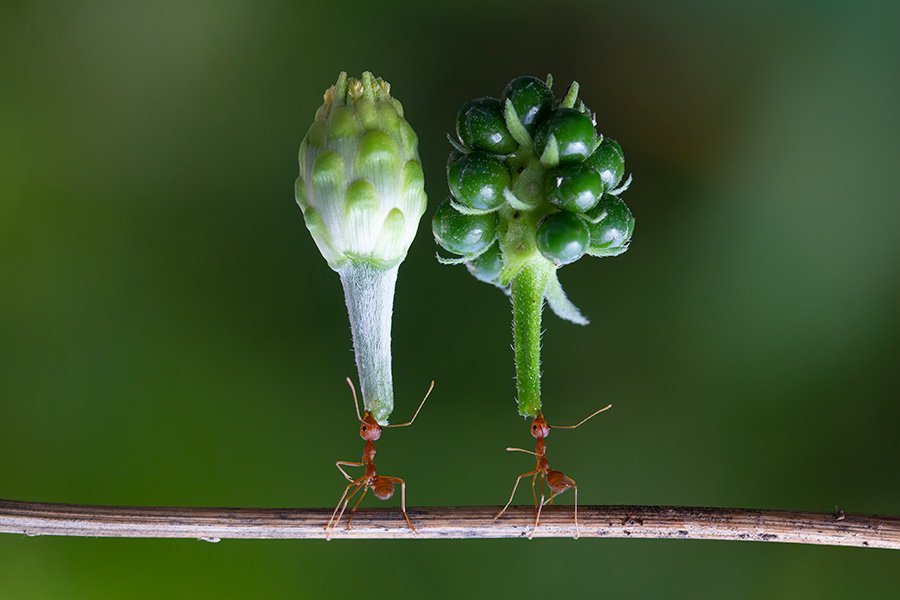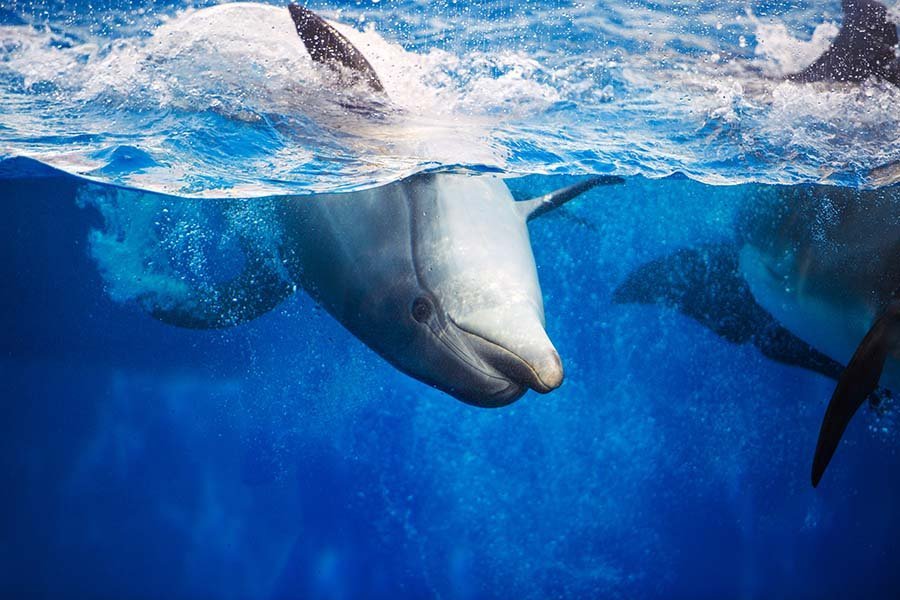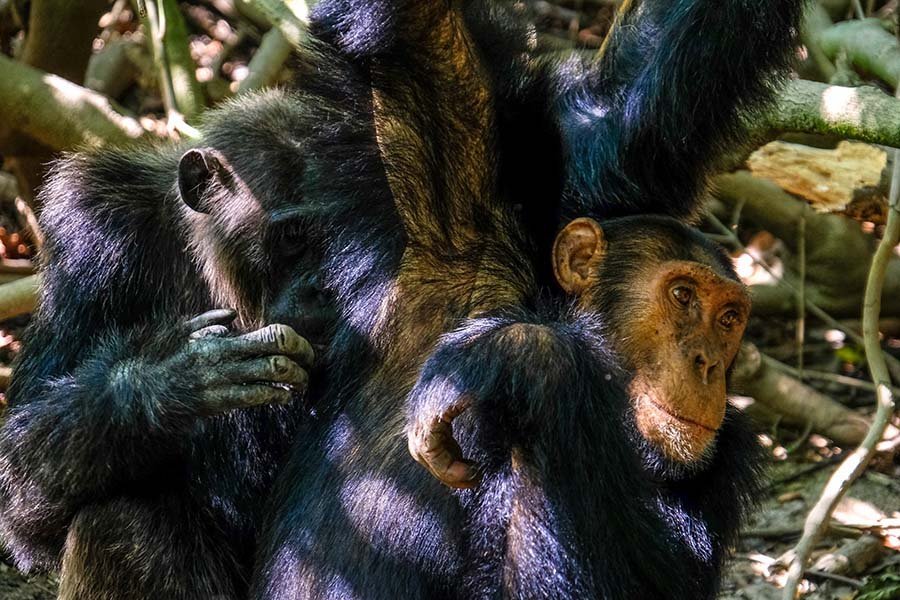Leadership Lessons From Our Animal Cousins
I created a model of leadership that I term ‘Natural leadership’. Part of this model of leadership draws inspiration from the animal kingdom, along with the natural world, indigenous ways of knowing and being, and the science of human flourishing. I believe that if leaders shift away from conventional beliefs that the world operates based on scarcity, individuality, competition, greed, resistance, and fear (unsustainable thinking/being), towards a paradigm based on realigning with spirit, wisdom, respect, giving back, responsibility and harmony (regenerative thinking/being), we will be able to change the destructive course we as humans are on. By prioritising regenerative thinking and being leaders can not only inspire others to embrace these ideals and approaches but, in turn, get everyone on board to work towards a more sustainable and successful future for all.
The Biggest Obstacles To Our Modern Crisis: Our Arrogance!
As humans, we often consider ourselves to be the most intelligent and capable species on the planet. This paradigm, often referred to as ‘human exceptionalism’, which views humans as superior and separate from the natural world, is one of the main contributors to the current crisis we are facing today. This mindset has led to a prioritisation of human interests over the health of the planet and other species, resulting in ecological destruction, climate change, and biodiversity loss. It has also contributed to a focus on individualism and competition rather than collaboration and collective well-being in our social and economic systems. This has led to increasing levels of inequality, social isolation, and declining mental health and well-being.
The belief in human exceptionalism has also contributed to our current leadership crisis, where leaders prioritise short-term gains and self-interest over long-term sustainability and the common good. However, this belief in human exceptionalism is largely misguided. The animal kingdom and the natural world offer a wealth of examples of intelligence, adaptability, and cooperation that we as humans could learn from, particularly when it comes to leadership.
Let's look at a few examples (and have a little bit of serious fun) of how we can reframe the above human exceptionalist paradigm and give credit to our extended family that has as much right to share this beautiful planet as we do:
Ants & Leadership
Ants are known for their natural leadership skills, particularly their ability to work together as a team to accomplish incredible feats. They communicate with each other through pheromones, following the trail of the leader to find food or build a nest. Ants also have specialised roles within the colony, each contributing to the success of the group. They work collaboratively, communicate effectively, and respect the unique abilities and strengths of each team member.
Natural Leadership Application: Natural Leaders can prioritise collaboration, effective communication, and respect towards the unique abilities and strengths of each team member. Just like how ants work together as a team to accomplish incredible feats while communicating through pheromones and following the trail of the leader, leaders can encourage their team members to collaborate and communicate effectively while respecting each other's unique abilities and roles within the team. Additionally, by acknowledging the contributions of team members, leaders can create a culture of accountability and ownership within the team. As such, by prioritising collaboration, effective communication, and respect towards the unique abilities and strengths of each team member, leaders can inspire their team to work together towards a common goal and achieve success.
Elephants & Leadership
Elephants are known for their natural leadership skills, particularly their ability to empathize and care for the members of their herd. They communicate with each other through vocalizations and body language, always looking out for the well-being of the group. Elephants also have a strong memory and are able to navigate long distances to find food and water. They inspire a sense of compassion, empathy, and a sense of responsibility for the well-being of those in the herd.
Natural Leadership Application: Natural Leaders can prioritise compassion, empathy, and a sense of responsibility towards their team members. Just like how elephants empathize and care for the members of their herd while communicating effectively through vocalizations and body language, leaders can encourage their team members to communicate effectively and empathize with each other. Additionally, by fostering a sense of responsibility towards team members, leaders can create a supportive and inclusive culture within the team. By being able to navigate long distances to find food and water, elephants also inspire us to have a sense of resourcefulness and adaptability towards challenges. By prioritising compassion, empathy, and a sense of responsibility towards team members, leaders can inspire their team to work together towards a common goal and achieve success.
Dolphins & Leadership
Dolphins are known for their natural leadership skills, particularly their ability to work together as a team and communicate effectively with each other. They use a complex system of clicks, whistles, and body language to communicate and are able to coordinate their movements and behaviours with incredible precision. Dolphins also have a strong sense of social intelligence, able to recognise and respond to the emotions of their fellow pod members. They inspire each other through effective communication, collaboration, and emotional wisdom.
Natural Leadership Application: Natural Leaders can prioritise effective communication, collaboration, and emotional wisdom within their team. Just like how dolphins use a complex system of clicks, whistles, and body language to communicate and coordinate their movements with incredible precision, leaders can encourage their team members to communicate effectively and collaborate with each other towards a common goal. Additionally, by fostering a sense of emotional wisdom towards team members, leaders can create a supportive and inclusive culture within the team. By being able to recognise and respond to the emotions of their team members, leaders can inspire their team to work together towards a common goal and navigate any challenges that may arise.
Bees & Leadership
Bees are known for their natural leadership skills, particularly their ability to work together as a team to achieve a common goal. They communicate with each other through dance and pheromones, always respecting each other's unique abilities and roles within the hive. Bees also have a strong sense of duty and responsibility, each contributing to the success of the group. They inspire each other to work collaboratively, communicate effectively, and understand the importance of each individual's contribution to the success of the team.
Natural Leadership Application: Natural Leaders can prioritise collaboration, effective communication, and a strong sense of duty and responsibility within their team. Just like how bees work together as a team to achieve a common goal while respecting each other's unique abilities and roles within the hive, leaders can encourage their team members to collaborate and communicate effectively while understanding the importance of each individual's contribution to the success of the team. Additionally, by fostering a sense of duty and responsibility towards team members, leaders can create a culture of accountability and ownership within the team. By prioritising collaboration, effective communication, and a strong sense of duty and responsibility, leaders can inspire their team members to work together towards a common goal and achieve success.
Chimpanzees & Leadership
Chimpanzees are known for their natural leadership skills, particularly their ability to navigate complex social structures and alliances within their communities. They communicate with each other through a variety of vocalizations and gestures and are able to recognize and respond to the emotions of their fellow chimpanzees. Chimpanzees also have a strong sense of social intelligence, able to understand the needs and desires of their group members and navigate conflict resolution. They inspire each other through effective communication, empathy, and the ability to navigate complex social dynamics.
Natural Leadership Application: Natural Leaders can prioritise effective communication, empathy, and conflict resolution within their team. Just like how chimpanzees navigate complex social structures and alliances within their communities through effective communication, leaders can encourage their team members to communicate effectively with each other and understand the needs and desires of their group members. Additionally, by fostering a sense of empathy and understanding towards team members, leaders can create a supportive and inclusive culture within the team. By being able to navigate conflict resolution and complex social dynamics, leaders can inspire their team members to work together towards a common goal and achieve success.
Wolves & Leadership
Wolves are natural leaders, known for their ability to navigate and protect their social groups. They communicate with each other through a variety of vocalizations and gestures, always respecting each other's unique abilities and contributions. Wolves also have a strong sense of responsibility and protectiveness towards their group members, able to defend them from danger and navigate group dynamics. The lead wolf directs the pack and maintains order by setting boundaries and enforcing rules, while other wolves take on specialised roles such as hunting or caring for the young. Wolves inspire each other with strength, responsibility, and a deep sense of loyalty and protectiveness towards those they lead.
Natural Leadership Application: Natural Leaders can prioritise collaboration and respect within their team. Just like how wolves work together as a team to protect each other from danger while respecting each other's unique abilities and strengths, leaders can encourage their team members to work collaboratively towards a common goal while respecting each other's unique strengths and abilities. Additionally, by fostering a sense of responsibility and protectiveness towards their team members, leaders can inspire a culture of loyalty and support within their team. By prioritising collaboration, respect, and protection within the team, leaders can create a strong and resilient community that inspires team members to work together towards a common goal and be the best they can be.
Octopuses & Leadership
Octopuses are incredibly intelligent and adaptable creatures, able to solve complex problems and use their environment to their advantage. They are known for their ability to change colors and textures to blend in with their surroundings, and they can even manipulate objects with their tentacles. Octopuses show natural leadership by using their unique abilities and strengths to thrive in their environment. They embrace creativity and innovation and use their skills to overcome challenges and achieve success.
Natural Leadership Application: Natural Leaders can prioritise creativity and innovation within their team. Just like how octopuses use their unique abilities and strengths to solve complex problems and adapt to their environment, leaders can encourage their team members to use their unique abilities and strengths to overcome challenges and achieve success. Additionally, by inspiring a sense of adaptability and flexibility within the team, leaders can foster a culture of continuous learning and improvement. By being able to manipulate objects and change colours and textures to blend in with their surroundings, octopuses inspire us to be creative and innovative in our approach to problem-solving and to use our skills to navigate any challenge that may arise.
Birds & Leadership
Birds are known for their natural leadership skills, particularly their ability to work together as a team to achieve a common goal. They communicate with each other through chirps and whistles, respecting each other's unique abilities and contributions. Birds are also known for their adaptability, able to migrate long distances and adjust to different environments. They inspire each other to work collaboratively, communicate effectively, and be adaptable in the face of change.
Natural Leadership Application: Natural Leaders can prioritise collaboration and adaptability within their team. Just like how birds work together as a team to achieve a common goal and communicate effectively, leaders can encourage their team members to work together towards a common goal and communicate effectively with each other. Additionally, by developing adaptability and flexibility within the team, leaders can create a sense of agility and resilience within their team. By being able to adjust to different environments and face challenges with adaptability, leaders and their teams can navigate change with ease and success.
Gorillas & Leadership
Gorillas are known for their natural leadership skills, particularly their ability to navigate and protect their social groups. They communicate with each other through a variety of vocalizations and gestures, and are able to recognize and respond to the emotions of their fellow gorillas. Gorillas also have a strong sense of responsibility and protectiveness towards their group members, able to defend them from danger and navigate group dynamics. They inspire each other to lead with strength, responsibility, and a deep sense of loyalty and protectiveness towards those in the troop.
Natural Leadership Application: Natural Leaders can prioritise communication and empathy towards their team members. Just like how gorillas use vocalizations and gestures to communicate and understand the emotions of their fellow gorillas, leaders can use effective communication to build stronger relationships with their team members. Additionally, by developing a strong sense of responsibility and protectiveness towards their team members, leaders can create a sense of trust and loyalty within their team. By prioritising the well-being and protection of their team members, leaders can inspire their team to work towards a common goal and navigate any challenges that may arise.
Conclusion
By overcoming our predisposition to believe in human exceptionalism, we can learn a lot from both the animal kingdom and the natural world. The examples above of animal behaviour and intelligence can be applied to leadership, promoting teamwork, communication, empathy, creativity, adaptability, organisation, problem-solving skills, conflict resolution, loyalty, and emotional wisdom. By incorporating these strategies, tactics, and behaviours into their leadership style, leaders can become better "natural" leaders, fostering a more efficient, effective, and supportive work environment. Crucially by acknowledging and learning from the intelligence of the natural world, we can create a more sustainable and successful future for all.
Finally, looking to the natural world for solutions to our leadership problems not only provides an excellent and creative way to teach 'Natural Leadership' principles to adults but also to children. This approach can have an additional benefit by teaching children to appreciate the animal world and nature with more dignity and respect, recognising that their intelligence is, at times, greater than humans' or that nature's solutions are more sustainable. As a result, children will be more inclined to take care of the environment. While it may be difficult to change the entrenched beliefs of some adults, we can shape and influence the future generation to view the world as something to protect and preserve.










